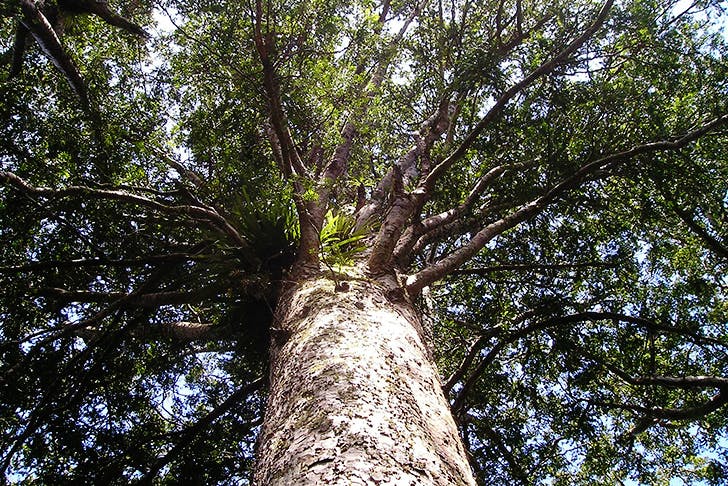Unless you've been living under a rock (which we sincerely hope is not the case), you'll know that one of the things currently threatening New Zealand's 'clean, green' image is kauri dieback—a serious, easily-spread disease that can actually kill the native tree with which it shares its name; and has forced the closure of many walking tracks around Auckland, where kauri are commonly found.
Yes, unfortunately this pesky disease is still proving a nuisance since we last ran a story on it in 2018, sharing with you the news that the forested area of the Waitākere Ranges had—much to our disappointment—been closed by the Auckland Council in a bid to stop kauri dieback from spreading. Sadly, this closure is still in effect today; with countless walkways across Auckland since falling victim to the same fate, including those on the Hibiscus Coast, North Shore and beyond. You can find a full list of which tracks are closed here.
So what exactly is the disease at the centre of all this drama? Kauri dieback is caused by a fungus-like pathogen called Phytophthora agathidicida (Pa), which lives in the soil and attacks kauri roots, damaging the tissues that carry nutrients and water within the tree, effectively starving it to death. Incredibly, it can be spread through just a pinhead-sized piece of soil and to make matters worse, there isn't any cure. It can affect kauri of any age, and most, if not all, trees that contract the disease die.
Suddenly, the frustration/disappointment/inconvenience you may feel when you've planned a bush walk, only to arrive and find that the track you were going to use is no longer open (it's happened to the best of us!), seems kind of trivial in comparison. “Kauri dieback poses a huge threat to our forests,” explains Richard Hills, Auckland Council’s Environment and Climate Change Committee Chair. “Kauri are so important to supporting overall forest health. If we lose our kauri, we risk losing whole ecosystems." He adds, “It’s crucial that we all do our bit to protect kauri so that we can preserve our environment now and for future generations to enjoy.”
With that in mind, Auckland Council have been hard at work putting controls in place on those tracks that are still open, including their ingenious wash stations, which many of you will already be familiar with. And while it may be tempting to sometimes skip on these kinds of protocols, please don't—our forest's future depends on it. “We all have to think about the ways we interact with our native bush,” urges Councillor Hills. “It’s simple things like respecting track closures, staying on tracks at all times, scrubbing and spraying your gear and keeping dogs on leads, these will make a real difference.”
And the future looks promising; with Auckland Council working on a five year upgrade plan that will involve re-opening many of the tracks that it has closed—a process which may seem slow, but will certainly be worth it in the long run. “One of the reasons we’ve closed off much of the Waitākere Ranges and other tracks around Auckland is to give the bush time to rest while we work on upgrading paths to a kauri-safe standard,” explains Councillor Hills.
Finally, while they may not quite be the bush walks you're used to, there are certainly plenty of other ways for you to get amongst nature whilst (fingers crossed) waiting for our precious forest to recover—for a full list of options, including walkways, trails and cycleways that encompass coastlines, mountains and everything in between, click here.
So spread the word, not the disease and help keep New Zealand clean, green and kauri dieback-free—future generations will thank you for it.
Image credit: Auckland Council
